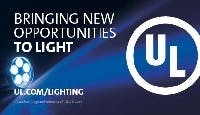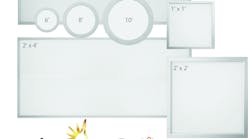UL has announced an addition to its UL Recognized Component Program that is meant to simplify the process of modular LED driver selection for solid-state lighting (SSL) product development teams. The optional Type TL Program places some minimum requirements on modular LED drivers that would allow a luminaire manufacturer more flexibility in swapping from one driver to an alternative assuming both had the Type TL certification.
The Recognized Component Program is meant to streamline the UL product safety certification process. When an SSL development team specifies a product from UL's component database, certain attributes of that product relative to safety are known through the process that manufacturers undergo in submitting a component into the program. Component types include packaged LEDs, modular LED drivers, light engines and modules, LED holders, and other products. For example, a Philips Lumileds LED was the first LED submitted to the program back in 2009.
An end SSL product must still undergo safety certification, but the process is simpler when recognized components are used in the product. Moreover, when a component is swapped out in an iteration of a product design, replacement by another recognized product results in a simpler new system-level certification, or possibly elimination of the need for an additional evaluation.
LED drivers have already been part of the Recognized Component Program, but there has been considerable flexibility in terms of how the drivers are packaged and tested. For example, the program has included drivers in full enclosures, in a partial housing, and in an open-frame format basically meaning a driver implemented on a printed circuit board (PCB). The driver manufacturers have dictated their own temperature testing and rating procedures. SSL developers that swap drives have generally had to submit the revised product for safety testing.
The Type TL program will tighten the requirements on LED drivers. For example, all products submitted to the new program will require a full enclosure. Moreover, UL will require that products must be temperature tested in a 40°C oven. The tighter guidelines will ensure that drives have "enough critical safety commonality" that SSL developers may be able to substitute drivers without having to resubmit the system for a safety evaluation.
"Our goal is to help manufacturers by providing a more efficient path to market access," said Michael Ritto, UL business development manager for lighting components. "With this program in place, LED luminaire manufacturers will be able to more easily source alternate LED drivers."
The benefits of the new program to SSL manufacturers will come in a number of ways. For example, a luminaire design might be offered with optional feature sets such as 0-10V dimming, or DALI (digital addressable lighting interface) control. Those features are implemented in the driver, and the luminaire maker can select a range of Type TL drivers to offer the optional features.
The Type TL program will also provide SSL manufacturers with supply chain flexibility. The lighting manufacturer can swap vendors based on pricing or supply limits. And manufacturers can more simply upgrade products as new driver technology emerges.





